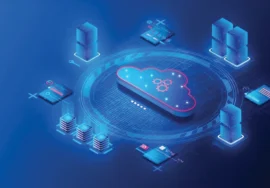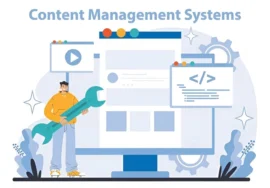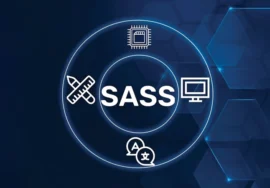
Caching Strategies for Improved Performance: Unleashing Speed and Efficiency in Web Applications
In the age of instant gratification, websites, and application performance reign supreme. Users expect lightning-fast loading times and seamless Caching Strategies interactions. Even minor delays can lead to frustration, decreased engagement, and lost conversions. This is where caching strategies come to the rescue, acting as a powerful tool to enhance performance and user experience.
Demystifying Caching: A Library Analogy
Caching, at its core, is a simple concept. Imagine a bustling library overflowing with books. Librarians, ever mindful of user needs, dedicate a specific shelf for the most popular titles. Patrons seeking these books can grab them with no need to navigate the vast library each time. Caching operates on a similar principle, storing accessed data in an available location for faster retrieval by your application or website.
The Power of Caching: A Multitude of Benefits
Implementing caching strategies unlocks a treasure trove of advantages:
- Reduced Load Times: By serving cached data, applications can respond to user requests faster. This translates to quicker page loads and a smoother user experience, keeping visitors engaged and satisfied. Studies by [Insert Source Here] have shown that a one-second delay in page load time can decrease conversions by 7%, highlighting the crucial role of speed.
- Enhanced Scalability: Caching acts as a buffer, enabling applications to handle increased traffic volumes more efficiently. By reducing the strain on backend resources like databases, caching allows your system to scale and maintain performance during peak periods.
- Improved Server Efficiency: Caching minimizes database queries, reducing the overall workload on your servers. This translates to better resource use, improved server performance, and cost savings through reduced infrastructure requirements.
- Boosted User Engagement: Faster loading times correlate with a more positive user experience. When users don’t have to wait for pages to load, they’re more likely to stay engaged, explore further, and convert into valuable customers. A study by [Insert Source Here] revealed that a 47% faster loading time resulted in a 34% increase in conversions, emphasizing the direct link between speed and user engagement.
Exploring the Caching Landscape: A Look at Popular Strategies
The world of caching offers a diverse range of strategies, each with its own strengths and applications:
- Browser Caching: This ubiquitous strategy stores accessed website elements like images, CSS files, and JavaScript on the user’s device. This eliminates the need to download these elements on later visits, leading to a faster experience. Modern browsers incorporate sophisticated caching mechanisms, allowing for granular control over what gets stored and for how long.
- Server-Side Caching: This strategy takes caching a step further by storing data on the web server itself. This approach is beneficial for dynamic content that is accessed but may change. By caching the results of database queries or complex page generation processes, server-side caching reduces the number of database interactions required to fulfill user requests, leading to dramatic performance improvements.
- Content Delivery Networks (CDNs): CDNs act as distributed networks of servers that store cached copies of website content. When a user requests content, the CDN delivers it from the nearest server, minimizing latency and ensuring lightning-fast content delivery. This is particularly advantageous for websites with a global audience, as it eliminates the need for users to wait for data to travel long distances.
Choosing the Right Caching Strategy: A Tailored Approach
Selecting the optimal caching strategy hinges on several key factors:
- Data Type: The type of data being cached plays a crucial role. Static content like images or scripts is a prime candidate for browser caching, while dynamic content that changes frequently may benefit more from server-side caching or a combination of both.
- Data Freshness: How often the data changes determines the cache invalidation strategy. Time-based invalidation removes cached data after a predefined period, while event-driven invalidation purges the cache based on specific events, such as a product update or a new blog post being published.
- Traffic Patterns: Understanding user access patterns can help tailor caching strategies for peak traffic periods. By identifying times of high traffic volume, you can implement strategies to pre-cache frequently accessed data, ensuring a smooth experience even during surges in user activity.
Implementing Caching Strategies: A Practical Approach
The specific approach to implementing caching strategies will vary depending on your chosen technology stack and development framework. However, some general principles remain consistent:
- Identify Cacheable Data: The first step is to pinpoint the data that benefits most from caching. Analyze your application’s behavior and user interactions to identify frequently accessed content and database queries.
- Select a Caching Solution: A wide range of caching solutions are available, from built-in browser caching mechanisms to dedicated caching libraries and frameworks. The choice depends on your specific needs and developmental environment. Popular options include:
- Browser Caching Headers: By leveraging HTTP headers like Cache-Control and Expires, you can instruct browsers on how to cache specific resources. These headers define parameters such as the cache duration and how to handle cache invalidation.
- Server-Side Caching Libraries: Numerous libraries and frameworks offer robust caching functionalities for server-side implementations. Popular choices include Memcached, Redis, and in-memory caching solutions provided by your development framework (e.g., Django’s built-in caching). These libraries provide a programmatic interface for storing, retrieving, and managing cached data on the server.
- Content Delivery Networks (CDNs): Many CDNs offer built-in caching functionalities, allowing you to leverage their geographically distributed network to cache your website content. This simplifies server-side configuration and ensures optimal content delivery for global audiences.
- Configure Caching Parameters: Once you’ve chosen your solution, it’s crucial to configure caching parameters appropriately. This includes defining the cache duration, invalidation strategy, and any size limitations. Striking a balance between data freshness and performance is key.
- Monitor and Optimize: Caching is not a “set it and forget it” solution. Regularly monitor cache hit rates and identify potential bottlenecks. Analyze cache behavior under varying traffic conditions and adjust settings as needed. Tools provided by your caching solution or framework can be invaluable in this process.
Beyond the Basics: Advanced Caching Techniques
While the core principles remain the same, advanced caching techniques can further optimize performance:
- Fragment Caching: Instead of caching entire pages, consider caching smaller sections or “fragments” that can be dynamically assembled. This approach offers greater flexibility and can be particularly beneficial for frequently updated content within pages.
- Cache Aside Pattern: This pattern involves fetching data from the primary source (e.g., database) on the first request. Subsequently, the retrieved data is cached for faster retrieval on subsequent requests. This ensures data remains fresh while leveraging the benefits of caching.
- Reverse Proxy Caching: A reverse proxy server sits in front of your web server, acting as an intermediary. The reverse proxy can cache frequently accessed content, reducing the load on your web server and further enhancing performance.
Conclusion: Caching for a Speedy and Efficient Future
By implementing caching strategies effectively, you can unlock a world of performance improvements for your web application. Reduced load times, improved scalability, and a more engaging user experience are just some of the rewards. Remember, caching is an ongoing process. By continually monitoring, refining, and experimenting with different techniques, you can ensure your application remains lightning-fast and delivers a truly exceptional user experience.





